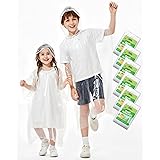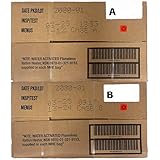Understanding Potential Disasters
Researching Common Threats
When I first started my disaster planning, I realized how crucial it was to understand the potential threats in my area. You might think you know them, but doing a little research helped me uncover risks I hadn’t even considered. Natural disasters like hurricanes or earthquakes are often at the forefront, but don’t forget about things like wildfires or floods—especially if you live near a river or in a wooded area.
It’s also important to look at man-made disasters. For instance, if you happen to live near industrial zones, chemical spills could be a concern. I recommend checking out local government resources or even talking to neighbors about their experiences. This will give you a broader understanding of what you might face.
By identifying these risks, I was able to start tailoring my plans and supplies to better suit my particular situation. Knowledge is power, and in disaster planning, it can be lifesaving.
Assessing Your Vulnerabilities
Next up, I took some time to assess my own vulnerabilities. This step is super personal because everyone’s situation is different. For example, I live with a young child and a pet, which added layers to our planning process. I had to consider what supplies they would need, such as special food for my pet or emergency contacts for babysitters.
It’s also vital to think about your health and mobility. Are you or anyone in your household elderly or have medical conditions? If so, you’ll need to stock up on any necessary medications and plan for a quick-evacuation route that takes any special needs into account.
By putting together a detailed vulnerability assessment, I developed a clearer and more customized disaster plan that would ensure everyone’s safety and comfort in times of distress.
Creating a Comprehensive Plan
After wrapping my head around the threats and my vulnerabilities, I was ready to dive into creating a comprehensive disaster plan. This was my favorite part because it felt like building a safety nest! I made a checklist of essential information like emergency contacts, preferred meeting places, and quick escape routes from my house.
I found that the more detailed the plan, the better prepared I felt. It’s like a safety net: If the unexpected happens, having those details handy can make a world of difference. I even included a map of the area showing nearby shelters. This way, my family wouldn’t have to think about where to go—just follow the plan!
== > What if ... Get a FREE Subscription to PREPARE
Finally, I made sure to have a digital copy stored on my phone as well as a hard copy tucked into our emergency kit. It’s all about having multiple access points to your vital info.
Gathering Essential Supplies
Stocking Up on the Basics
This part can feel like playing a game of Tetris, but I promise it’s essential. I began by creating a list of the basic supplies every household should have in the event of a disaster. I made sure to include bottled water, non-perishable food, a flashlight, batteries, and a first aid kit. You’d be surprised how easy it is to overlook simple items like hand sanitizer or wipes!
As I gathered my supplies, I tried to think ahead. I asked myself, “What would I want if I were stuck at home for a week?” and make sure to have those items on hand. Things like comfort foods, games, and other entertainment can be just as vital as the essentials.
Having these basics ready doesn’t just give you peace of mind; it also allows you to focus on what’s important during a crisis—keeping your loved ones safe and calm.
Customization Based on Your Family’s Needs
As I gathered my basics, I made it a point to customize my supplies according to my family’s specific needs. For instance, since I have a toddler, I made sure to pack baby food, diapers, and some of their favorite toys to keep them entertained.
It’s also wise to consider any special needs for older or differently-abled family members. I stocked extra medications and mobility aids—things that might not be immediate necessities but would sure help in a tight spot.
Remember that planning is not a one-size-fits-all process. What works for my family might not work for yours. Getting to know your family’s preferences and necessities allows for a more personalized and effective approach.
Periodic Review of Supplies
Once I had everything in place, I realized the importance of a periodic review. Life changes, and so do our supplies. A few months down the road, I noticed that some food items were close to expiry, and I hadn’t replaced batteries that I had used up. Conducting a review regularly keeps everything fresh and ready to go.
Get Preparedness and Self-Reliance Tips. Subscribe!
Additionally, I made it a habit to update my emergency contacts list. New numbers, changes in addresses—it’s crucial to keep everything current for those tough moments. It feels good to know I’m not just stashing away supplies but actively managing and improving my emergency preparedness.
By taking the time to do this, I’ve learned to keep my supplies vibrant and ready, just like a garden that needs regular tending!
Training and Drills
Conducting Family Drills
You’ve got all your supplies stocked up, and your plan is ready to roll—but have you practiced? Conducting family disaster drills is often overlooked but fundamentally important. Gathering the fam and walking them through the plan can really bring everything to life. I like to make it fun! We turn it into a little game to see how quickly everyone can find their emergency kit and follow our escape routes.
These drills not only ensure that everyone knows what to do in a panic but also build confidence in your preparation. I found it a bit awkward at first, but once we got into it, it became a bonding experience. Just a reminder: kids will often have simpler understandings of things, so I explained in a way that felt relatable for them.
Having regular drills also lets us tweak the plans based on what works or doesn’t work. After a drill, we would often sit down and discuss what went smoothly and what we can improve next time.
Learning First Aid and Emergency Skills
One thing I really committed to was learning first aid and basic emergency skills. I enrolled in a class and learned all kinds of useful information, from CPR to how to treat a burn. It empowers not just me, but everyone in my household to feel more capable during a crisis.
What’s even better is sharing this knowledge with my family. We practiced procedures together, reinforcing what we learned. This way, regardless of who is in charge, someone is always prepared to step up. Plus, knowing you can save a life is incredibly rewarding!
These skills can be the difference between panic and decisive action when things go south. Seriously, it’s like adding a superpower to your disaster toolkit!
Staying Informed and Updated
The last piece of the puzzle is staying informed about changes in your environment or recommendations from local authorities. You know, keeping your ear to the ground. Things can switch up fast, and it’s vital to adapt your plans accordingly. For example, if there are new evacuation routes or updates on local hazard assessments, make sure your plan reflects that.
I also recommend signing up for local alert systems. You’ll get real-time updates and can be proactive instead of reactive. Knowledge is your best friend in an emergency.
Regularly checking in with community resources ensures you’re not just planning isolated from the real world. It allows for greater awareness and better preparedness.
FAQ
What are the essential supplies I should have for a disaster?
Some essential supplies include bottled water, non-perishable food, a flashlight, batteries, a first aid kit, and important documents. Customize your supplies based on your family’s specific needs, like medications or baby supplies.
How often should I review my disaster preparedness plan?
It’s wise to review your disaster preparedness plan at least every six months. This ensures that any changes in your family dynamics, local risks, or supplies are up to date.
What kind of drills should I conduct with my family?
Conduct escape route drills, practice how to find your emergency kit quickly, and simulate emergency scenarios. Make them engaging and turn them into a game to enhance participation.
How can I make my disaster plan more effective?
To make your disaster plan more effective, tailor it to your specific risks and vulnerabilities. Include all family members in the planning process to ensure everyone is on board and knows what to do.
Why is first aid training important in disaster planning?
First aid training empowers you and your family to act decisively in emergencies, potentially saving lives. It helps to reduce panic and confusion, allowing for calm, informed responses during a crisis.
Get Preparedness and Self-Reliance Tips. Subscribe!
Related Content
AUGASON FARMS Emergency Food Supply Bucket, 200 Servings, Dehydrated Meal Kit, Variety Pail, Long Shelf Life Just-Add-Water Meals for Prepping, Disaster Survival, Camping, Hiking, and More
$100.97 (as of December 10, 2025 15:18 GMT -05:00 - More infoProduct prices and availability are accurate as of the date/time indicated and are subject to change. Any price and availability information displayed on [relevant Amazon Site(s), as applicable] at the time of purchase will apply to the purchase of this product.)MRE Meal Ready to Eat Meals - Pack Of 4 - Emergency MRE Meals For Camping Hiking & Other Outdoor Activities Nutritional Emergency Food Rations - Freeze Dried Food w/ Flameless Heater, Entree, Dessert, & More - MRE Kit for Emergency Survival, Hunting, & More Betterbundle
Now retrieving the price.
(as of December 10, 2025 15:18 GMT -05:00 - More infoProduct prices and availability are accurate as of the date/time indicated and are subject to change. Any price and availability information displayed on [relevant Amazon Site(s), as applicable] at the time of purchase will apply to the purchase of this product.)





